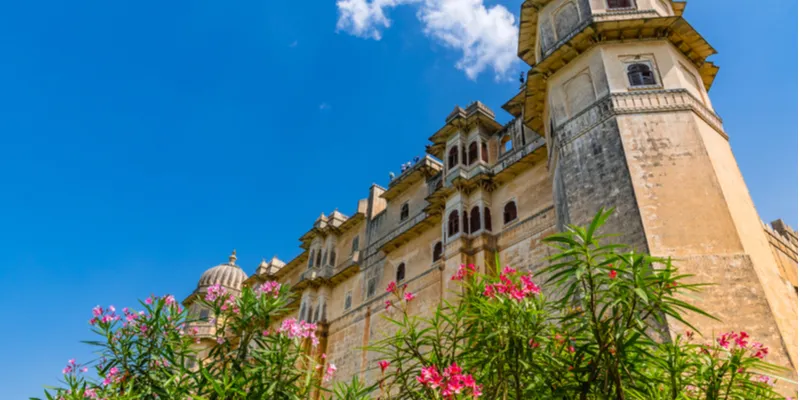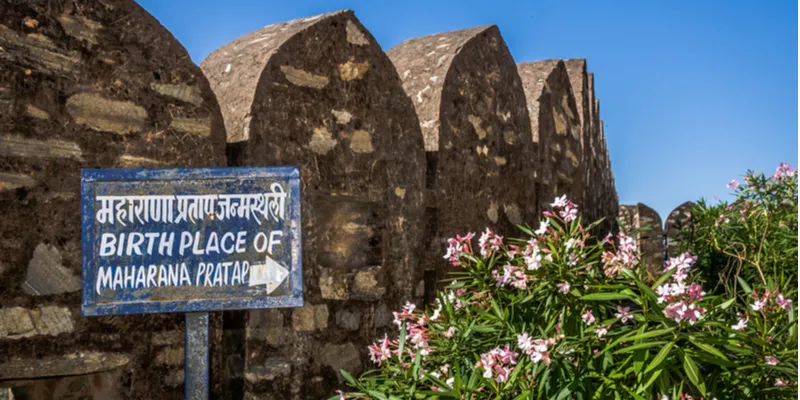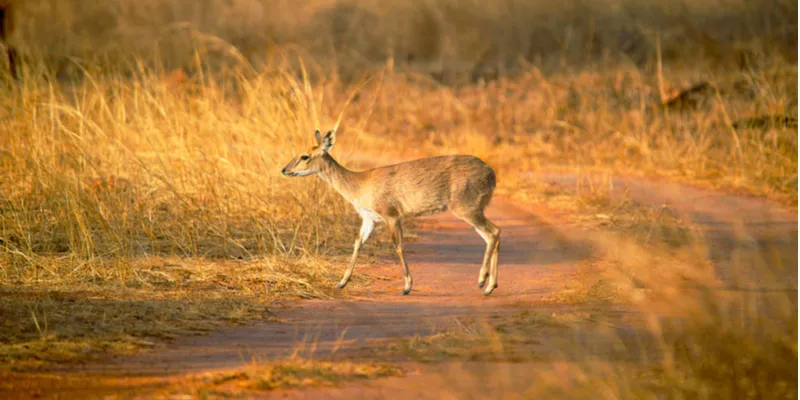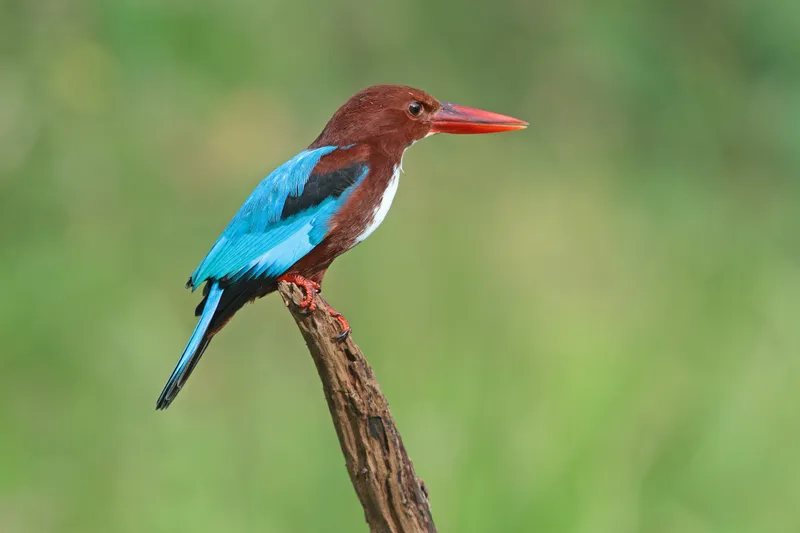A view from Kumbhalgarh: Scenic landscapes, dal batti and a palace in the clouds
Kumbhalgarh, located 80km from Udaipur, is rich in colour, light and history. Here’s a look at what else our travel writer discovered…
It’s green as far as the eye can see. Not the dehydrated, dry green one associates with Rajasthan, but a luxurious, fertile green. The intermittent rain has showered the trees clean, the leaves are dripping water, and a swirling mist embraces the imposing mountains of the Aravalli range.
We, the husband and I, are on our way to Kumbhalgarh, a town steeped in history. Located about 80 km from tourist hot spot Udaipur, Kumbhalgarh is famous for its fort, the most magnificent among Mewar’s 84 forts. The mist clears, and the formidable fort, built by Maharana Kumbha in the 15th century, comes into view.
The solid stone blocks seem to tell the tales of the past. Once called the “Eye of Mewar” on account of its location, Kumbhalgarh appears impregnable. In Kumbha’s time, the kingdom of Mewar was vast – it spread from Ranthambore to Gwalior, and included huge areas of present-day Rajasthan and Madhya Pradesh. As many as 84 fortresses stood guard over Mewar.
Of these, 32 were designed and built by Kumbha. Kumbhalgarh, with its soaring steel grey ramparts, defined the boundaries between Mewar and Marwar. Built in the 15th century and enlarged through the 19th century, it served as a sanctuary for Mewar’s rulers in times of war.

Kumbhalgarh Fort, Rajasthan
Located on a hilltop 1,100 metres above sea level, the fort – the second most important citadel after Chittaurgarh - is cradled in what appears to be extremely inaccessible and hostile territory. The location is what lends an air of invincibility to Kumbhalgarh; it’s the reason that this fort fell only once to invaders during its lifetime.
What strikes the eye the moment we near the fort is the perimeter wall – huge and seemingly unending. At a tea break during our drive from Ahmedabad, we learnt that the wall, which hugs the rugged terrain of the Aravalli Mountains, extends an astounding 36 km and is said to be the second longest wall in the world (after the Great Wall of China).

The Mewar fortress was built on Aravalli Hills in the 15th century
Ringed by 13 mountain peaks, the fort has seven massive gates - Ariat Pol, Hulla Pol, Hanuman Pol, Ram Pol, Bhairava Pol, Paghra Pol, Top-khana Pol and Nimboo Pol – and a large number of watchtowers. The solid foundation and the hefty walls (broad enough to stand eight horses side by side) have ensured that the fort served its rulers well and continues to stand the test of time. Even today, the imposing structure dwarfs everything else in the vicinity.
We step out and take a look around. The impregnable walls encircle the fertile Shero Mallah Valley, and enclose a large number of ancient monuments cenotaphs, ponds and flourishing farms. As many as 360 temples exist inside the premises, we’re told. We’re big on religion, not on temples, so choose to pay obeisance at just one - the Shiva Temple - and clamber on.
Folklore reveals that Kumbha used to burn huge lamps that consumed 50 kg ghee and a 100 kg of cotton to provide light for farmers who worked during the nights in the valley. The erstwhile royal family now employs a priest to care for the shrines of their ancestors. Twice a day, the priest climbs up to light diyas in front of the statues of Hanuman, Chamunda and Ekling.

Signpost of the birthplace of Maharana Pratap at Kumbhalgarh
Kumbhalgarh is also the birthplace of Maharana Pratap, Mewar’s greatest warrior. The octagonal room in which he was born, the hall in which his grandson, Prince Karan, entertained Mughal Emperor Shah Jahan, and the beacon tower used to summon Mewar's chieftains to war remain huge draws for tourists. But Kumbhalgarh isn’t just another palatial fort.
The austere chambers, the huge reservoirs, the modest garden court, and the narrow staircases reveal that it was essentially a warrior’s hideout. This is where Prince Udai was smuggled to safety in 1535, when Chittoor was under siege. The prince, later the successor to the throne, went on to found Udaipur.
The fort is hemmed in by the huge Kumbhalgarh Wildlife Sanctuary, spread over 578 square kilometres. Set amid altitudes of 500 metres to 1,300 metres, the Kumbhalgarh sanctuary, which straddles parts of Rajsamand, Udaipur and Pali districts, is home to a large variety of wildlife. During the monsoon, the fort and the emerald green surrounds of the sanctuary present a beautiful picture. The sun shines on the dappled leaves and filters through the dense canopy of trees.

Four Horned Antelope, Tetracerus quadricornis or chousingha
We decide to stop off for a quick walk in the serene jungle. Bird calls rent the air, and a stream swollen with monsoon inflows gushes past. The squishy squelch of soft mud as we walk is the only sound to be heard. Suddenly, my foot hits something. A branch, I think, bending to pick it up. It turns out to be the horn of an antelope. Clutching my find close to my heart, I walk on.
Amid the woodland, hidden by a profusion of scrubs, we spot a chinkara, the gentle Indian gazelle. Apart from chinkara, chausingha (the four-horned antelope), sambhar and nilgai (blue bull), the Kumbhalgarh sanctuary is home to leopards, sloth bears, wolves, hyenas, jackals and hares. You can well do a foot safari on your own, but foot safaris and horse safaris organised by local operators are also a good option for those keen on wildlife sightings.
The most popular safari route takes one into the sanctuary from the Kumbhalgarh Fort and then goes on to Ghanerao – the chances of seeing chinkara, nilgai, antelopes and a few species of birds are high on this route. More than 40 wolves live in the Joba area of the sanctuary. During summer, when waterholes dry up, a pack may be seen scrounging around for water.

The white-breasted Kingfisher
At the waterholes, the birdlife of Kumbhalgarh comes alive. Bird watchers can sight red spur owls, parakeets, golden orioles, grey pigeons, bulbul, doves and white breasted kingfishers flying past or hidden amid the foliage. Find a hidey hole somewhere and lie in wait; you might just view the shy grey jungle fowl.
We chance upon a gorgeous peacock, its brilliant blue-green plumage fanned out, in the forest. Speaking to locals, we realise that peafowl are easily spotted in Kumbhalgarh – they come regularly for the grain scattered by jungle guards.
Ahead, the Thandi Beri Lake is a haven for bird lovers. The forest cover, water grasses and fish foster an environment where flamingos, sarus cranes, spoonbills, painted storks, cormorants, purple heron, egrets, duck, and rosy pelican flourish in winter. Animal lovers will also enjoy a guided tour of the crocodile farm (the forest department guest house offers overnight stays).
For those who like the complete jungle experience, a couple of hotels offer the chance of camping in the reserve forest around Kumbhalgarh, and provide horses, tents and food. An experienced “sawar” also accompanies the group to explain the myriad mysteries of the forest and show off the wildlife diversity.

Kumbalgarh Fort is a popular tourist destination
The next day, we decide to climb to the top of the ramparts again. I accept the side-effects of a sedentary lifestyle as we set out. By the time, we reach the top, I’m more than a bit out of breath. But that doesn’t seem to matter as I look around. I recall reading somewhere that this massive stronghold has, during its 700-year existence, been captured just once. It fell to the combined forces of Mughal Emperor Akbar, Raja Man Singh of Amber, Raja Udai Singh of Marwar, and the Sultan of Gujarat, and locals still believe that the mighty bastion was conquered only because water was scarce at that time.
From the summit, I can see why it remained invincible. The clear views of surrounding regions would easily give away any approaching enemy long before the army reached anywhere near Kumbhalgarh.
We’re in the Badal Mahal, the palace of the clouds, located at the very top of this magnificent structure.
Up here, the cool fingers of the mist embrace me lovingly. I look down – the long-fortified wall, the many temples, the long and steep flights of steps, the green, verdant sanctuary, and the gorgeous vista of the town. Straddling the mighty mountains, Kumbhalgarh stands tall as a symbol of the past glory of Rajasthan.
What to eat
Try the dal baati (wheat dumplings cooked in a and dunked in dal) and gatte ki sabzi (gram flour steamed dumplings in a curry) with hot rotis. Non-vegetarians shouldn't miss the lal maas (mutton in a spicy red gravy). Check out the few eateries in town or opt for the restaurants in the hotels.
Nearby attractions
History buffs will like Haldighati, the famed battlefield where Maharana Pratap took on the forces of the Mughal Emperor Akbar (65 km away); the Ranakpur Jain Temples (50 km); the Nathdwara Temple (50 km); the Eklingnath Temple (70 km); and the Parshuram Mahadev Temple (12 km).










